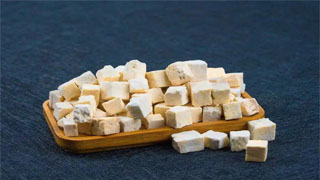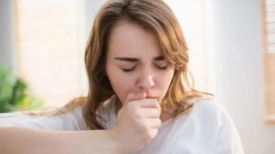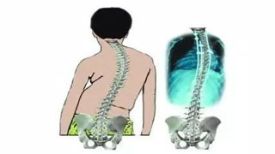
Siwei Jianbu Tang is adapted from traditional Chinese medicine and mainly used to treat blood stasis diseases characterized by lower limb pain. Its main site of action is blood vessels. Many complications of diabetes, such as diabetes foot, diabetes nephropathy, venous thrombosis and so on, often have application opportunities.
Lower limb venous thrombosisMao, male, 51 years old. At the end of November 2004, he was diagnosed with left lower limb venous thrombosis due to swelling and pain in his left leg, with a length of 20cm. He was hospitalized locally for treatment. The doctor wanted to undergo surgery to remove the thrombus, but the patient was afraid of the surgery, but intravenous antithrombotic therapy was ineffective. I hope to try taking traditional Chinese medicine.
Starting from May 21, 2005, the following soup formulas were taken: 10g of Guizhi, 5g of Cinnamon, 15g of Poria cocos, 12g of Peach Kernel, 10g of Danpi, 15g of Red Peony, 15g of White Peony, 30g of Achyranthes bidentata, 12g of Danshen, 20g of Dendrobium officinale, and 10g of Safflower. After taking it for two months, the lower limb venous thrombosis has disappeared after a follow-up ultrasound examination.
Venous thrombosis mostly occurs in the lower limbs, and is mostly in the left lower limb. The affected limb is swollen, thickened, and painful, and the onset is rapid. Its complication, pulmonary infarction, has a high incidence rate and mortality rate. It is said that about 50 to 200 thousand people in the United States die of pulmonary infarction every year. Venous wall injury, venous blood flow arrest, and hypercoagulable state are the three major factors contributing to the formation of lower limb venous thrombosis. Long term bed rest, postoperative surgery, kidney disease, venous catheterization, myocardial infarction, malignant tumors, smoking, oral contraceptives, rough massage, obesity, and advanced age can all be triggering factors. The treatment of this disease in modern medicine mainly involves raising the affected limb and intravenous infusion of low molecular weight dextran, compound salvia miltiorrhiza, and low-dose thrombolytic agents. If the symptoms do not improve and worsen after 3 days of the above treatment, interventional treatment may be considered. Traditional Chinese medicine treatment generally also uses blood activating and stasis resolving drugs.
From the perspective of traditional Chinese medicine, the patient's blood stasis not only refers to thrombosis in the lower limb blood vessels, but also has its unique diagnostic focus.
Firstly, the patient is a sturdy middle-aged man with a dark red complexion and tense abdominal muscles;
Secondly, there is swelling and pain in the left lower limb, which intensifies during movement;
Thirdly, there have been hemorrhoids in the past, but they have been frequent recently. Hemorrhoids are also an indication of blood stasis. The above three criteria are consistent with the judgment of blood stasis below.
The formula used in this case consists of the classic formula Guizhi Fuling Pill and the empirical formula Siwei Jianbu Tang. Guizhi Fuling Pill is a classic formula for promoting blood circulation and removing blood stasis, which can be discussed in the previous case.
I will focus on sharing my experience with the Four Flavors Jianbu Tang.
This formula consists of peony, Huai Niu Xi, Danshen, and Dendrobium. Mainly used to treat blood stasis diseases characterized by lower limb pain, its main site of action is blood vessels. Many complications of diabetes, such as diabetes foot, diabetes nephropathy, venous thrombosis and so on, often have application opportunities.
Most of these drugs in this formula were used in ancient times to treat lower back and leg pain or walking fatigue.
Shaoyao is the main medicine of the classic formula Shaoyao Gancao Tang. The Treatise on Cold Damage uses Shaoyao Gancao Tang to treat "foot spasms and urgency", saying that "the foot extends immediately after taking the medicine.". It is interesting that the "Zhu Family Collection and Verification Prescription" changed the name of this prescription to "Quzhang Tang" for the treatment of inability to walk. The Shennong Classic of Materia Medica also states that peony "eliminates blood stasis", and blood stasis can cause pain.
Huai Niu Xi, as stated more clearly in the "Shennong Bencao Jing", is mainly used to treat coldness, dampness, flaccidity, limb spasms, and knee pain that cannot be bent or extended. It is often used in Tang and Song prescriptions to treat soreness and weakness in the waist and knees.
Dendrobium is also commonly used in ancient times to treat symptoms of weak feet and lower back pain. For example, as recorded in the "Secret Essentials of the Outer Platform", the raw dendrobium wine is brewed with three pounds of raw dendrobium, one pound of achyranthes, eight liang of Eucommia ulmoides, eight liang of Salvia miltiorrhiza, and three liters of raw Rehmannia glutinosa. It is used to treat rheumatism, weak feet, waist and hip pain, and cold; There is a prescription in the "Dialectical Records" called Shihu Xuanshen Tang, which is made by decoction of one or two pieces of Shihu and two coins of Xuanshen in water. It is used to treat stomach fire, irritability, palpitations, and eventually impotence, weakness in both feet, and inability to walk.
Now it seems that most of the symptoms of leg weakness and low back pain are caused by diabetes, and some are diseases such as venous thrombosis. After a period of clinical verification, it was found that this formula has a good effect, mainly manifested in the relief of symptoms such as lower limb pain, numbness, cramps, and swelling. Some patients can also experience a decrease in high blood pressure, and some patients can also solve their long-standing constipation.
There are two types of peonies in the formula: red and white. It is commonly believed that white peony is mainly used for nourishing blood and softening the liver, and is mainly used for muscle spasms; Red peony is mainly used for promoting blood circulation and removing blood stasis, and is more commonly used for tongue dullness or blood viscosity. I often use red peony and white peony together in clinical practice, and the dosage is adjusted according to the condition. If there is severe pain or dry stool, the total amount of peony can reach 120g. Achyranthes bidentata can be divided into two types of decoction pieces: Chuan Niu Xi and Huai Niu Xi. According to habits, Huai Niu Xi has the effect of nourishing the liver and kidneys. Therefore, for those with lower back pain and weak feet, Huai Niu Xi is better to use, with a dosage of up to 100g.
The effect of this patient is quite good. Later, during follow-up, after taking traditional Chinese medicine for three months, the blood clot had dissipated, and there was a local residual thrombus capsule with a swelling sensation. Hemorrhoids did not occur, and there was no discomfort. The medication has been discontinued so far.
The content of the article is for clinical reference only. Non professionals in traditional Chinese medicine are not allowed to try medication.


